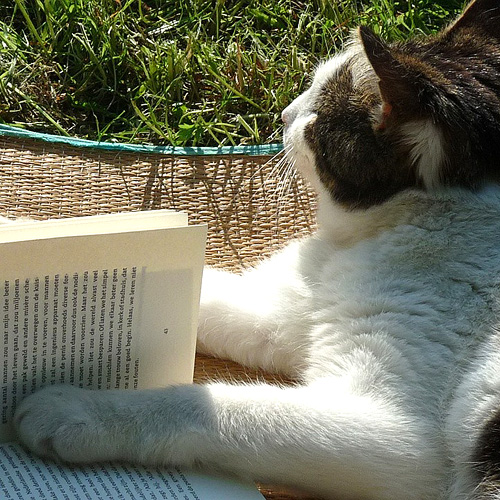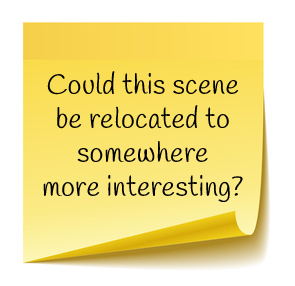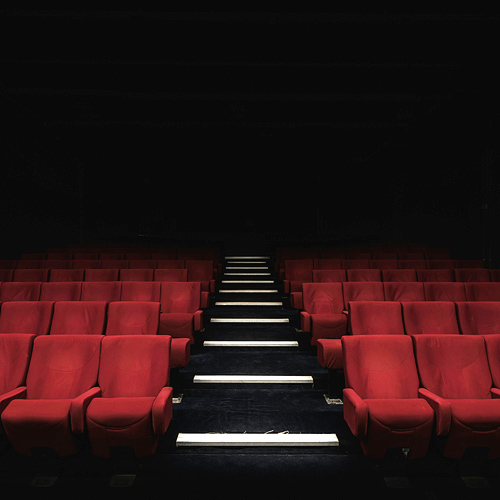Lights, Camera, Keyboard! 5 Tips to Make Your Novel More Cinematic
A couple of years ago, when I was battling through yet another draft of The Getaway, my forthcoming mystery-thriller, my literary agent gave me a piece of feedback: “Make it more cinematic.”
My heart sank. I thought my novel was cinematic. It was set on a private island in the Caribbean, for God’s sake. There were white sand beaches! Full moon parties! A fatal jet-skiing accident!
Back to the drawing board I went, because she was right. It was cinematic in my head, but it wasn’t hitting on the page.
Here are five methods I used to inject some movie magic into The Getaway:
1. Make quick cuts between scenes
One of the biggest differences between novels and movies/TV shows is the way they deal with going from scene to scene. Movies usually make quick cuts between locations, plunging the viewer into a new situation without warning. In novels, it’s more typical to wrap up a scene fully before moving onto the next one, often including details of how the characters moved from A to B.
However, there’s nothing stopping you, the novelist, from making quick cuts. A lot of that going-from-A-to-B stuff is superfluous. The reader wants the excitement of being thrown into a new environment.
So think like a screenwriter and try removing the table-setting stuff at the start of your scenes.
2. Use sensuous details… sparingly

As you might imagine, more cinematic = more visual. However, don’t get tripped up by trying to describe everything in too much detail. It takes much longer to read a description of (say) a sailboat on the water than it does to take in an establishing shot of the boat in a movie.
I recommend zeroing in on a few telling details that conjure up the setting, rather than getting bogged down in page-long descriptions. (Don’t forget one of my favourite pieces of writing advice: put the cat in the oven before you describe the kitchen.)
As fiction writers, we get the advantage of being able to ‘paint’ with all five senses, not just our vision. Make sure to drop in hints about smell, touch, sound and taste, too.
3. Relocate scenes to visually-exciting locations

As I rewrote The Getaway to make it more cinematic, I kept referring to a question I’d written on a Post-it note:
Could this scene be relocated to somewhere more interesting?
Too many of my scenes took place in settings that were mundane (e.g. a living room) or ones that had already been used (e.g. a restaurant).
As a fix, I brainstormed new settings and new background activities for my characters to undertake. That’s how I ended up with a scene on a ‘vanishing island’ (a sand spit that disappears at high tide) and a sequence where the characters go horse riding on the beach.
Result: the same basic dialogue/plotting but within scenes that were instantly more memorable.
4. Drop in fast-moving dialogue
Readers often refer to dialogue as “the good part” of a novel.
It’s also inherently cinematic to fill your book with people talking. Most movies don’t include much of characters on their own, wafting through fields, not saying anything. (And even when there is wafting-through-fields going on, it’s much faster to show the wafting than it is to describe the wafting.)
To increase that feeling of cinema, try dropping in dialogue even when you’re in the thick of description or writing summary narrative between scenes. For example:
It was crowded on the train platform. An elbow bumped me. ‘Get out the way!’
5. Cut to the bone

There’s a reason most movies are 90 minutes and people complain if they’re longer than 2 hours. The rule of cinema is: get in, get out, don’t outstay your welcome.
Similarly, most readers are not looking for slow-moving doorstoppers. They want fast-paced stories that leave them wanting more.
To create a cinematic novel, you the author need to cut, cut, cut. This means combining scenes, rooting out repetition, and making each and every sentence as economical as possible.
The reality is, if a reader gets bored while reading, they’re likely to put the book down… and turn on the TV. Therefore, a good book has to be just as cinematic as that slick new Netflix series.
Pin this post:









888starz login 888starz login .
мелбет сайт https://www.melbet3002.com
awesome
plinko game online http://www.plinko-kz1.ru
awesome